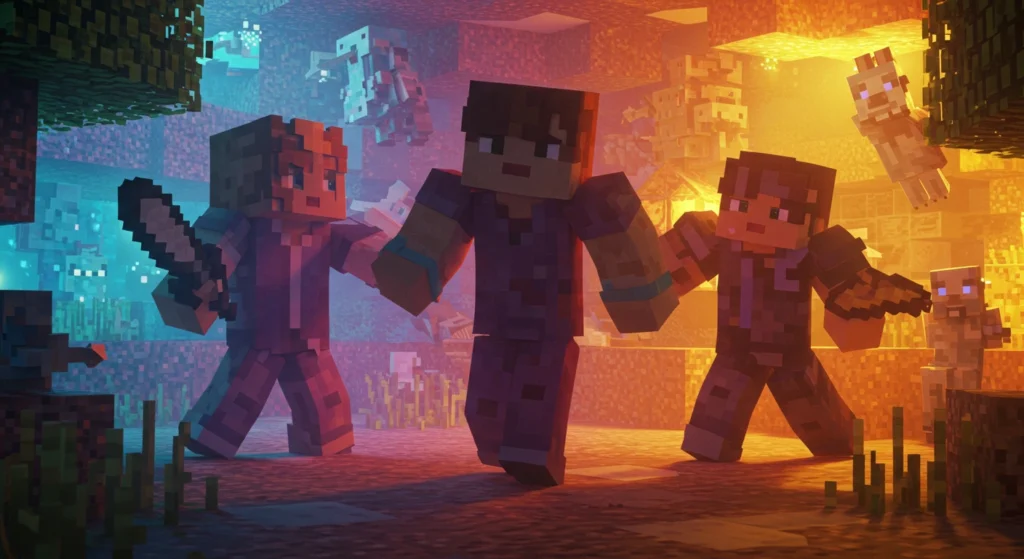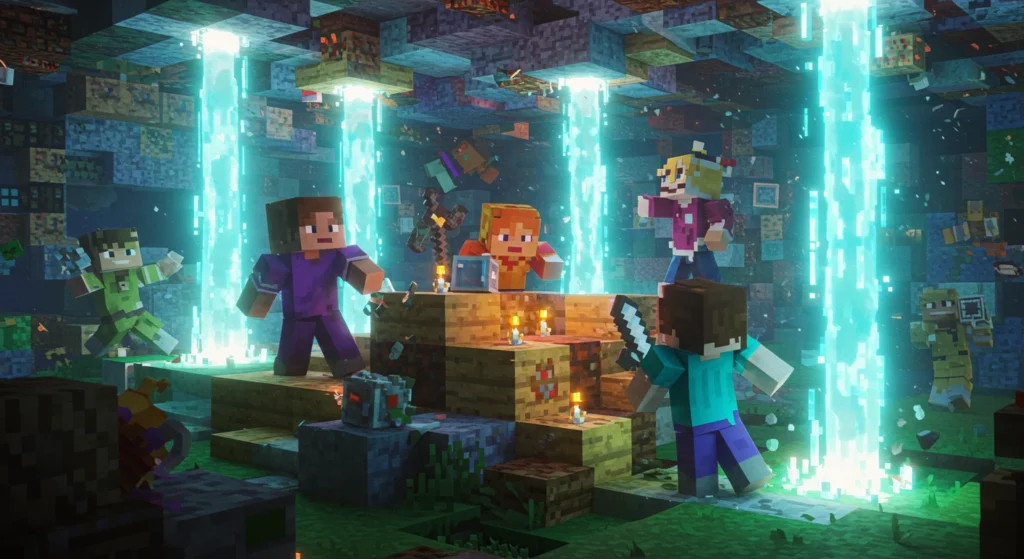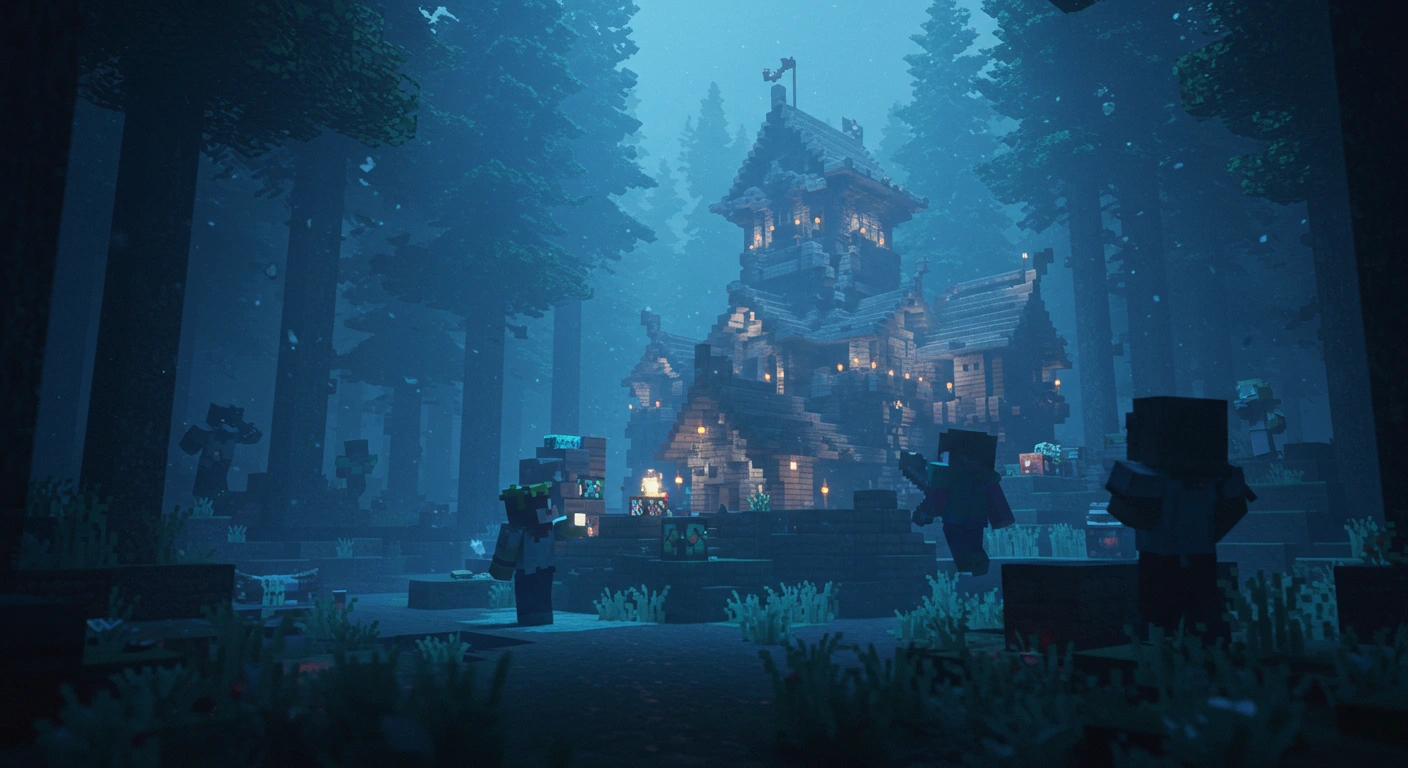
How Much RAM Does Your Minecraft Server Really Need?
So, you’ve mastered single-player Minecraft, built incredible structures, and explored vast landscapes. Now, you want to share the fun with friends, build a community, or maybe even try out complex mods and plugins. To do that reliably, you’ll likely need reliable Minecraft Server hosting. But what is it, and how do you get started without getting overwhelmed?
Don’t worry! This guide is designed specifically for beginners. We’ll break down everything you need to know about securing Minecraft hosting in simple terms, helping you choose the right service and get your own server up and running smoothly. Let’s ditch the confusion and get straight to building your multiplayer dream!
Understanding Minecraft Server Hosting Fundamentals
Think of Minecraft server hosting like renting a powerful, specialized computer that’s always online and configured specifically to run a Minecraft server. Instead of using your own PC (which comes with many limitations), you pay a company (a host) to manage the hardware, network connection, and underlying software needed to keep your Minecraft world accessible 24/7 to you and your friends.
Essentially, you’re outsourcing the technical heavy lifting so you can focus on playing the game. Good minecraft hosting providers ensure your server runs smoothly, stays secure, and is easy for you and others to connect to.
Why Use a Dedicated Server Host Instead of Your PC?
While you *can* technically run a Minecraft server on your home computer, it’s often not ideal, especially for beginners or anyone wanting a reliable experience:
- Performance Drain: Running a Minecraft server, especially with multiple players or mods, uses a lot of your computer’s resources (CPU, RAM). This can make your own game laggy or even crash your PC.
- Always On Requirement: For your friends to play whenever they want, your computer needs to be on, running the server software, 24/7. This increases electricity costs and wear-and-tear.
- Network Challenges: You need a consistently fast and stable internet connection with good upload speed. You also often need to configure tricky network settings like port forwarding on your router, which can be confusing and sometimes a security risk if done incorrectly.
- IP Address Issues: Your home IP address might change, meaning you constantly have to give your friends a new address to connect to (unless you set up dynamic DNS, adding more complexity).
- Limited Support: If something goes wrong, you’re on your own to troubleshoot.
Dedicated Minecraft server hosting solves all these problems by providing optimized hardware, stable connections, static IP addresses, and often, helpful customer support.
Choosing Your Ideal Minecraft Server Host: Key Factors
Selecting a Minecraft hosting provider can seem daunting with so many options. Here are the crucial factors beginners should consider:
1. Server Performance (CPU & Storage)
Lag is the enemy! A good host uses powerful processors (CPUs) and fast storage (SSDs are much better than older HDDs) to ensure smooth gameplay, even with many players or complex mods. Look for hosts that are transparent about their hardware specifications.
2. RAM (Memory) – Crucial for Server Capacity
RAM is one of the biggest factors determining how many players and mods/plugins your server can handle. Too little RAM causes lag and crashes.
- Vanilla Server (few players): 1GB – 2GB might be okay for 1-5 players.
- Vanilla Server (small group): 3GB – 4GB is a good starting point for 10-20 players.
- Modded Servers / Larger Groups: 4GB – 8GB+ is often necessary. Heavily modded packs might need even more.
Tip: Start with a reasonable amount based on your expected use and choose a hosting provider that allows easy RAM upgrades later. For more details, check out our blog post: How Much RAM Does Your Minecraft Server Really Need?
3. Datacenter Location (Reducing Latency)
The physical location of the server matters! Choose a host with servers geographically close to you and most of your players. This reduces latency (ping), leading to a more responsive gaming experience. Most providers list their datacenter locations.
4. Ease of Use (Control Panel Interface)
As a beginner, you want a user-friendly control panel. Popular options like Multicraft, Pterodactyl, or custom panels make it easy to start/stop your server, manage files, install mods/plugins (often with one-click installers), backup your world, and manage players without needing complex commands. This is vital for managing your Minecraft server hosting effectively.
5. Modpack & Plugin Compatibility
Want to customize your game? Ensure the host explicitly supports easy installation of Forge, Fabric, Spigot, Paper, Bukkit, etc., and offers one-click installers or straightforward guides for adding mods and plugins. This flexibility is a key benefit of quality game server hosting.
6. Reliable Customer Support
When things go wrong (and sometimes they do), good support is invaluable. Look for hosts offering responsive support via tickets, live chat, or Discord. Check reviews to see what others say about their support quality when dealing with Minecraft hosting issues.
7. Hosting Price and Scalability Options
Minecraft hosting prices vary widely, usually based on RAM. Find a balance between affordability and the resources you need. Don’t just pick the cheapest – ensure it meets your performance requirements. Crucially, check if you can easily upgrade or downgrade your plan as your needs change.

Your First Minecraft Server Setup: A Step-by-Step Guide
Okay, you’ve considered the factors. Here’s a typical setup process using a Minecraft hosting service (details vary slightly by host):
- Choose Your Hosting Company: Research providers based on the factors above. Read reviews! Popular beginner-friendly options often appear in “best minecraft server hosting” lists (do your own research too!).
- Select Your Server Plan: Pick a plan based primarily on the RAM you estimate you’ll need and your budget. Remember server location.
- Complete Purchase & Account Setup: Sign up and pay for your chosen plan.
- Access Your Server Control Panel: Your host will provide login details for their control panel (like Multicraft or Pterodactyl). This is your command center!
- Initial Server Configuration:
- Give your server a memorable name.
- Choose the Minecraft version (e.g., 1.20.4).
- Select the server type (Vanilla, Spigot, Paper, Forge, etc. – often via a dropdown or installer).
- Start the server for the first time!
- Find Your Server Connection Info (IP Address): Your control panel will display your server’s IP address and port (it looks something like
123.45.67.89:25565). This is what you and your friends use to connect. - Connect via the Minecraft Client: Launch Minecraft, go to Multiplayer > Add Server, enter a server name (your choice), paste the Server Address (IP:Port), and click Done. You should now see your server and be able to join!
Helpful Tips for New Minecraft Server Administrators
- Start Simple: Don’t try to install 100 mods on day one. Get comfortable with the basics of managing your rented server first.
- Learn Your Control Panel: Explore the options. Learn how to backup, restart, and manage basic settings provided by your Minecraft hosting provider.
- Backup Regularly: Most hosts offer automated backups, but manual backups before big changes are wise. Protect your world!
- Set Clear Community Rules: If playing with others, establish rules early on to prevent griefing or disputes.
- Utilize Support Resources: Don’t be afraid to contact your host’s support if you get stuck. That’s what they’re there for!
Conclusion: Your Multiplayer Minecraft Adventure Awaits!
Setting up your own server using a Minecraft hosting service might seem technical initially, but it’s far more accessible than you think, especially with the beginner-friendly tools most providers offer. By choosing the right host and understanding the key factors like RAM, location, and support, you bypass the headaches of self-hosting and get straight to the fun part – playing Minecraft with others.
Forget laggy home setups and confusing network configurations. Invest a little in quality Minecraft server hosting, follow the simple setup steps, and you’ll unlock a whole new dimension of collaborative building, exploration, and community fun. Now go forth and start your shared Minecraft journey!
Why wait? Book a server with us now and jump into the adventure: https://cosmic-host.com/pricing/
